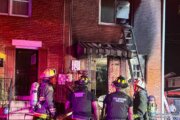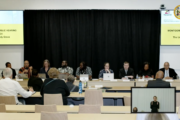When people think about growing older, several ideas may come to mind: retirement, leisure time, travel, time with family. Every stage of life has benefits and limitations, and we work through life understanding there will eventually come a time where we may depend on those around us for help. We trust in these friends and family, and in our communities, to provide the support necessary to help maintain our independence and continue to live the life we want for ourselves for as long as possible.
June 15 is World Elder Abuse Awareness Day. This month, I would like to bring attention to those individuals whose plans for late life have been broken as a result of neglect, financial exploitation, physical brutality and other faces of elder abuse/mistreatment. In the United States alone, it’s estimated that up to 1 in 10 older individuals has been a victim of elder abuse in one form or another, a staggering number that will continue to increase with the expected growth of this age group.
[See: 6 Ways to Age Well and Save Money Doing It.]
Elder abuse robs individuals of dignity, health, independence and, ultimately, can lead to a higher risk of prematurely dying. Yet elder abuse remains under-recognized. National estimates report that for every one known case, 24 cases remain unknown. This level of recognition is poor and does not always lead to reporting — only 1 in 14 cases of elder abuse is ever reported to the authorities. It remains the silent plight of an aging population and older generations.
The factors leading to abuse are myriad. Victims are often socially isolated, already have some level of functional impairment or may have some level of cognitive impairment. These are some of the most vulnerable of our neighbors. Despite these vulnerabilities, the victim may be supporting other family members who are reliant on them financially and who may be, themselves, suffering from addiction or mental illness. Though these risk factors have been studied and identified, we still lack the interventions that can successfully identify abuse cases, help manage such situations in a timely and effective fashion, or identify those who are at risk for abuse.
[See: Am I Just Sad — or Actually Depressed?]
The individuals who spend time with the victims are often unaware that this abuse is going on — either unable to recognize the red flags before them or pushing off responsibility for handling to the next person. Often, we do nothing because we may feel that it’s not our job or responsibility to act. Recognition is really the first step in fixing the problem, and we cannot recognize what we are not aware of. The opportunities to identify abuse can occur in any environment — with family and friends, in the community (the church, the bank) and in the hospital (doctor’s clinic, dentist’s office). There are many places where the community can provide a watchful eye to identify a problem.
[See: 7 Surprising Things That Age You.]
So be vigilant. Watch for changes in routine or appearance in older individuals who participate in regular activities in the community. Do not be afraid to inquire about observations you find concerning, such as weight loss; problems with walking; problems with memory; falls; or changes in mood or appearance. Ask about new friends or new family members who have come into a person’s life. Putting off the impulse to check on the well-being of a family member, friend or neighbor could allow time for unidentified elder abuse to continue. It takes courage to act, as you never know what will be uncovered by asking these questions, but the reassurance the person we are focusing on feels — knowing someone is watching out for him or her — is invaluable.
More from U.S. News
7 Surprising Things That Age You
Easy Ways to Protect Your Aging Brain
14 Ways to Protect Seniors From Falls
Shining Light in the Darkness of Elder Abuse originally appeared on usnews.com







